In the era of intelligent driving, BMW i5 has a new understanding of "integration of people and vehicles".
When the involution in the automobile market becomes the norm, the pressure on the industry benchmark is often the greatest.
It should not only constantly break through and surpass itself, but also keep an eye on all the ways to prevent the opponent next door from becoming a new leader. For example, Porsche 911 series, such as Mercedes-Benz S-Class, and for example, the brand-new BMW 5 Series that we test drive this time.
This benchmark model in the field of medium and large luxury cars has sold 10 million vehicles around the world, including more than 2 million users in China. This is enough to prove the market recognition of this car, but it also means that it faces the challenges mentioned at the beginning of the article.
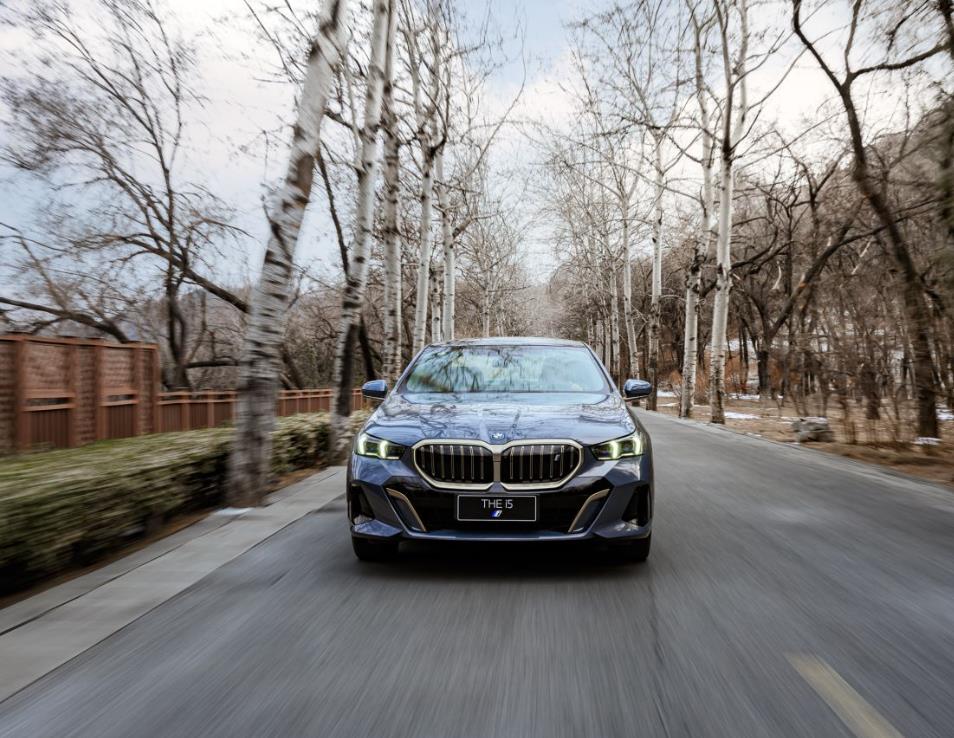
Speaking of it, any product can be in an invincible position as long as it can be done in eight words-no one has me, and people have me. But these eight words are not easy to do. There are quite a number of systems and institutions in the car, which should be promoted in the direction of high perception of users within a limited cost range, or exerted in the field of low perception that affects the reliability of the car. This is a big test for a company’s philosophy of making cars.
After a day’s test drive of the brand-new BMW 5 Series, we think we can sum up the highlights of this car with eight other words-"soft" and "hard" and man-machine driving together. In addition to maintaining its consistent sense of luxury and futurity in hardware aspects such as appearance, interior and design, this car also reflects BMW’s understanding of the word "driving" in the intelligent age.
Compared with the technology car-making company that simply frees drivers’ hands, feet and even eyes, BMW doesn’t want to completely separate "people driving" from "driving by themselves", but consciously emphasizes the concepts of "man-machine co-driving", "driving in the ring" and "integration of people and vehicles", so that human drivers can feel involved even with the protection of a high-level assisted driving system.
The model of this test drive is the brand-new 5-series pure electric vehicle-BMW i5. As an electric car, it still has a distinctive BMW family design style. Take the front face design as an example. Although the pure electric vehicle no longer needs the heat dissipation function of the air intake grille, the front face design of the i5 still retains the iconic kidney shape. Not only that, a circle of lights around the kidneys is particularly eye-catching when the ambient light is dim, and the future is full.
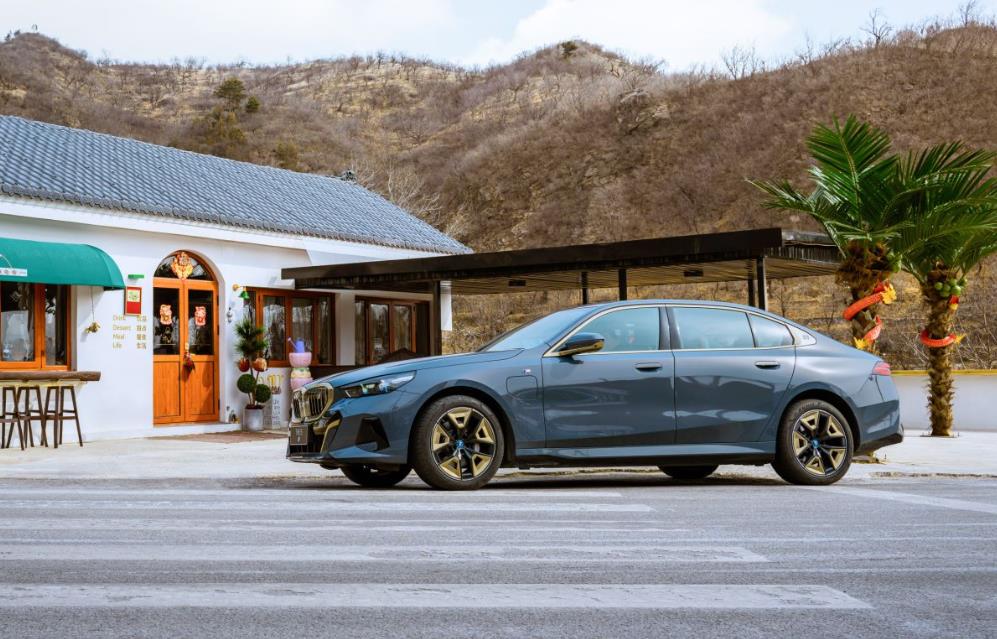
On the side of the car body, the smooth lines of the roof start from the C-pillar and adopt the slip-back shape. In addition, i5 is marked with the C-pillar "5" light-emitting logo unique to China market on BMW’s iconic "Hoffmeister Corner", which shows the identity of the 5 Series.
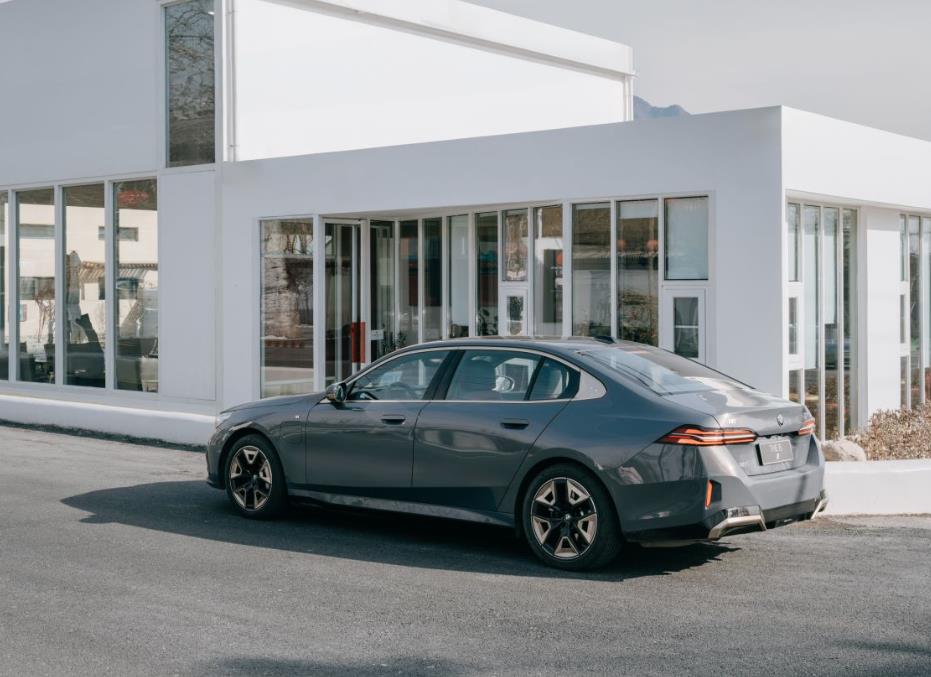
Sitting in the car, the embracing interactive light belt inherited from the flagship BMW 7 Series runs through the entire front dashboard and door, cleverly integrating touch-type car control buttons and ambient light. One-piece suspended curved screen, embracing interactive light band and crystal interior components complement each other in the front row, outlining a visual experience with rich layers and colorful colors.
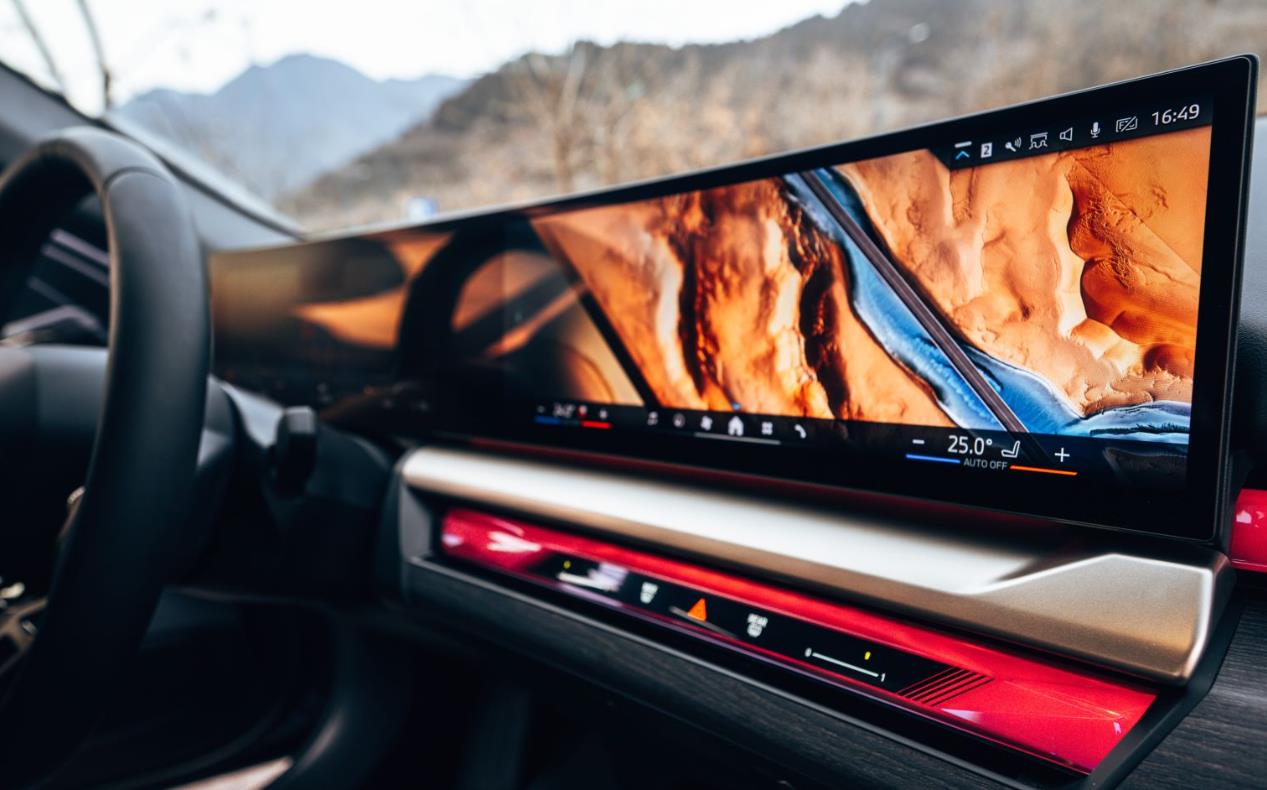
The driver’s seat of BMW i5 is full of sense of package, and it has enough support while having soft body feeling. Pressing the start button, although there is no pleasant roar when the engine of the fuel car starts, the visual impact of the whole cabin being lit instantly also gives enough sense of ceremony.
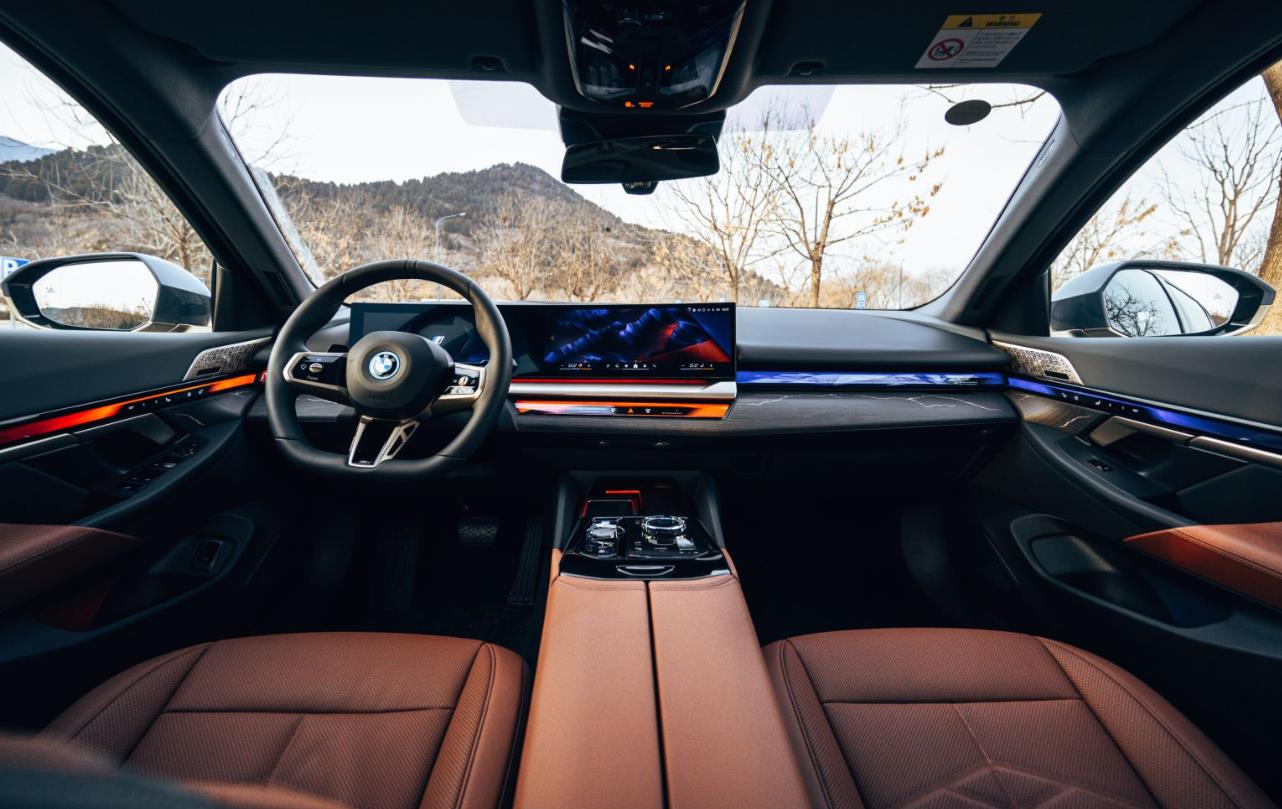
Like most models of this brand, the steering wheel of BMW i5 is as thick as ever, but the steering feel of this car is quite silky. In terms of power, BMW i5 eDrive35L provides the maximum output power of 210 kW and the peak torque of 410 Nm. The data is not exaggerated, but thanks to the profound adjustment skills and the power output characteristics of the motor, the response of this car is quick but not "string" at all, and the fault tolerance rate is very high.
On the highway section with good road conditions, this car has full power and stamina. Seeing the speed soaring rapidly, it will not bring the dizziness that most electric vehicles will have.
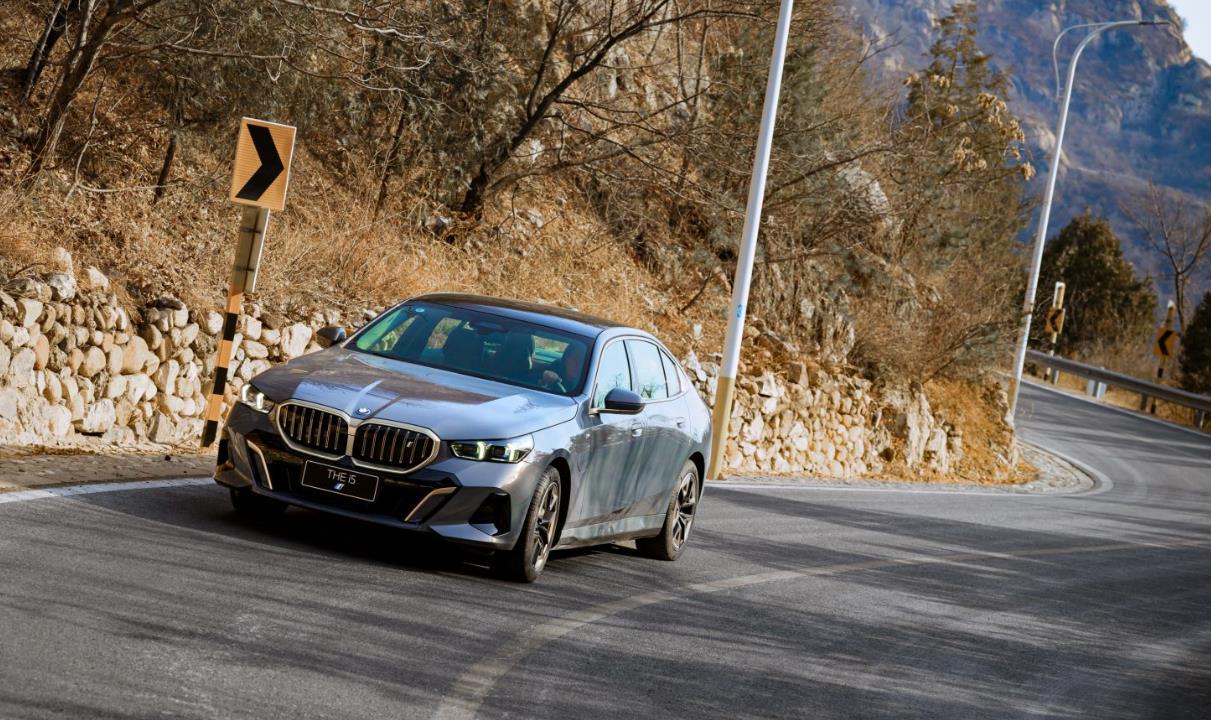
On the mountain road section, facing the continuous curve with obvious height difference, with each braking and steering, the chassis adjustment skill of BMW i5 can be demonstrated.
QDM, a newly upgraded 9th generation lateral dynamics management system, can be called chassis super brain. It monitors various dynamic parameters of the vehicle through sensors, analyzes and predicts the next dynamics of the vehicle, and then coordinates the functions of the chassis, so that each function of the chassis can cope with it calmly, so that the vehicle can avoid pushing and oversteering in corners to the maximum extent, and then ensures the stability and maneuverability of the vehicle. Thanks to this, the BMW i5 can turn into and out of the corner with elegant body posture.
The new car also adopts the integrated braking system IB 2.0, which takes only 150 milliseconds to fully brake and build pressure, and the braking distance can be shortened by about 20% compared with ordinary vehicles.
Although the industry generally believes that BMW’s handling is no longer pure, it seems to me that both the G-generation 3 Series and this BMW i5 still maintain BMW’s solid handling quality, but now BMW has added a little comfort to the vehicle to better meet the actual needs of more domestic users.
After experiencing the pure mechanical quality, let’s look at its driving assistance level. The activation of BMW i5 driver assistance system is quite simple, just press the corresponding button on the left side of the steering wheel to activate it with one button. Through the Mode button, you can choose the "intervention degree" of driving assistance, and the optional modes range from the most basic adaptive cruise to the most advanced assisted driving Pro.
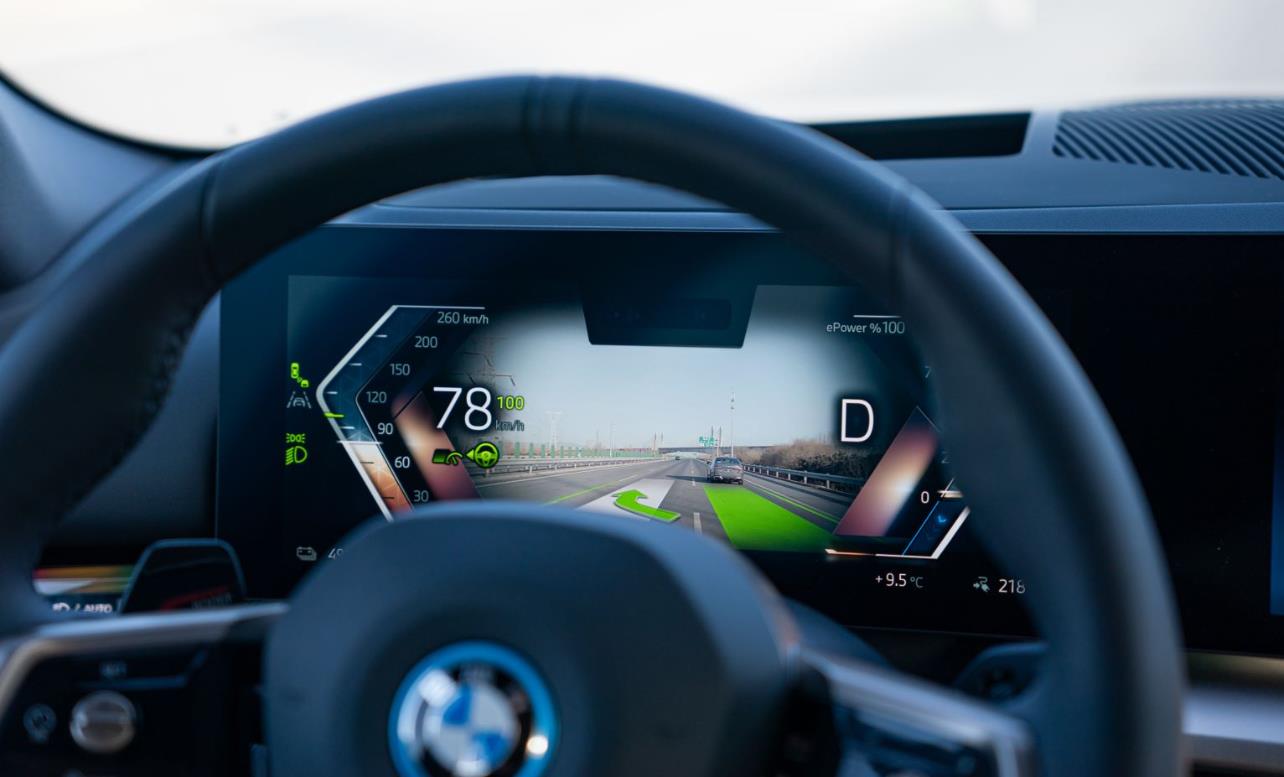
Take the automatic driving assistance system Pro as an example, its biggest highlight is the function of "changing lanes of sight". When the vehicle is in the speed range of 60 km/h -180 km/h, if the local train meets the traffic conditions, a lane change suggestion prompt will appear on the dashboard. At this time, the driver will take a look at the rearview mirror, and the intelligent driving system will track the driver’s sight and head movements through the infrared camera, and the vehicle can complete the lane change immediately.
In the actual use process, we did successfully realize this function. However, it should be pointed out that domestic drivers usually aim at the rearview mirror with the corner light, so it is difficult to turn their heads close to 90. However, the "line-of-sight lane change" on BMW i5 requires drivers to turn their heads greatly before they can automatically change lanes.
We understand the original intention of the design of the system. Because in many countries, traffic regulations require drivers to turn their heads 90 degrees before changing lanes and stay for 1 second. But in reality, few people will do this, because turning around for a second is likely to ignore the road ahead. At the same time, under BMW’s concept of "driving in the ring", this is also to remind drivers that it is only the auxiliary driving stage at present, and they should always observe the road conditions and complete the driving work with the car.
From the use level, it may be better to use the "line-of-sight lane change" function if the requirements for the user’s turn range and stay time are more relaxed.
In terms of the back row experience, BMW i5 has arranged a 31-inch oversized 8K screen in the back row, which supports the 32:9 panoramic playback mode and introduces applications such as iQiyi video. It is worth mentioning that the BMW suspended giant screen is easy to collect and release, and the front and rear distance can be adjusted adaptively according to the seat position.
Lying in the comfortable seats in the back row and watching TV dramas through the big screen, Bowers & Wilkins surround sound system presents top-quality sound effects, as if it were a private mobile cinema. In addition, Huawei’s application market has been introduced into the back screen, which can satisfy users’ self-selection of applications, and at the same time, it can also realize the functions of playing games, playing videos, attending meetings and so on.
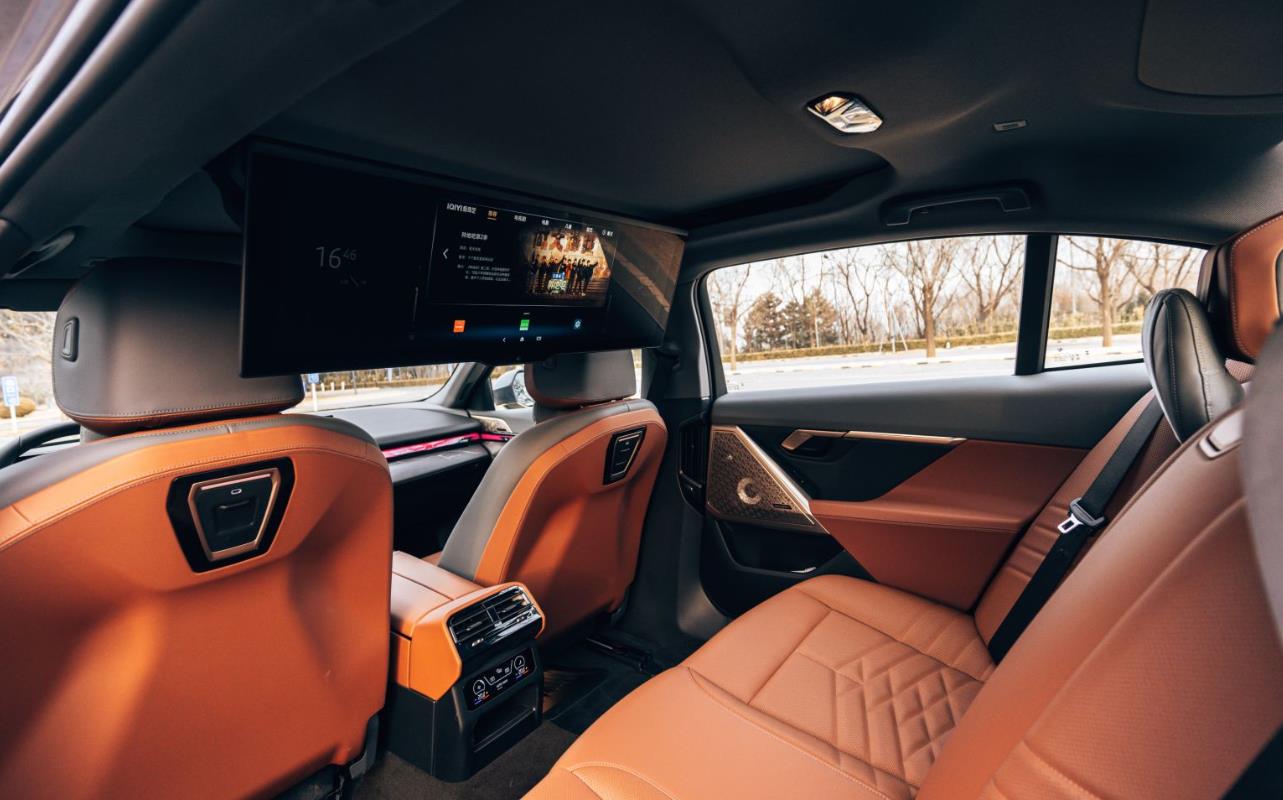
On the whole, BMW i5 has all the characteristics of a large and medium-sized luxury electric car-powerful gas field, avant-garde design, full interior technology and proper layout, solid chassis, abundant power reserve and mature driving assistance function.
However, as mentioned in the article, there is still room for improvement in details. We look forward to a more silky line-changing function in the future, and also suggest making the navigation map better-at least at complex intersections, it can automatically enlarge the scale and give more clear hints.